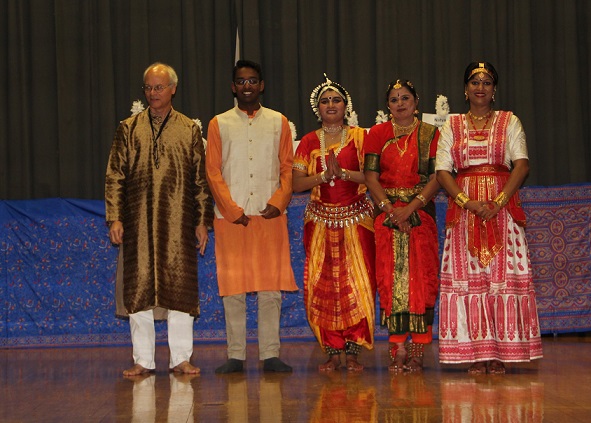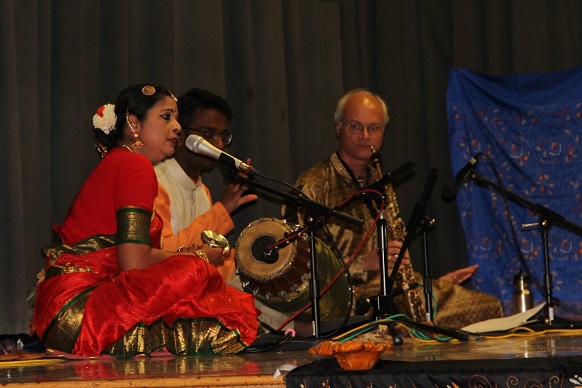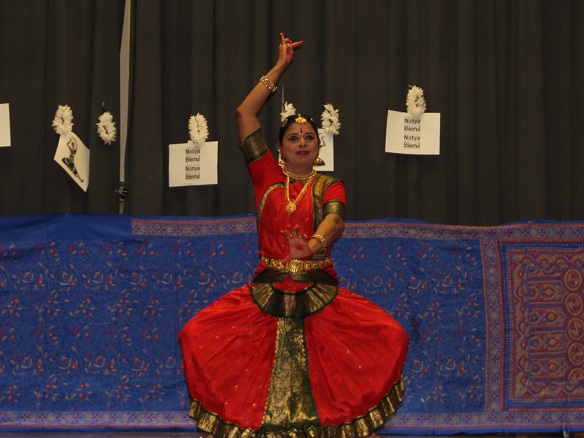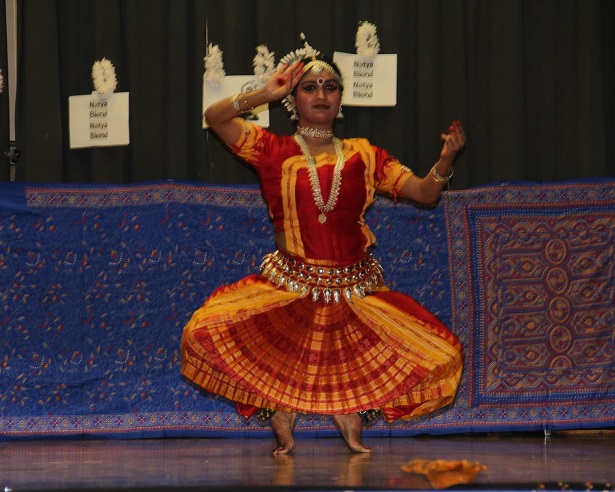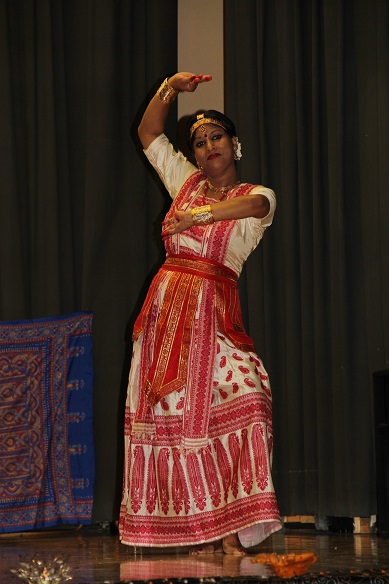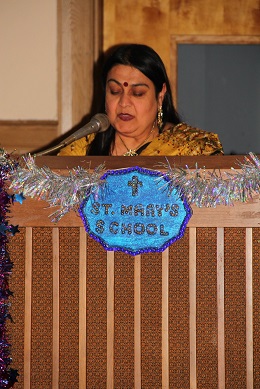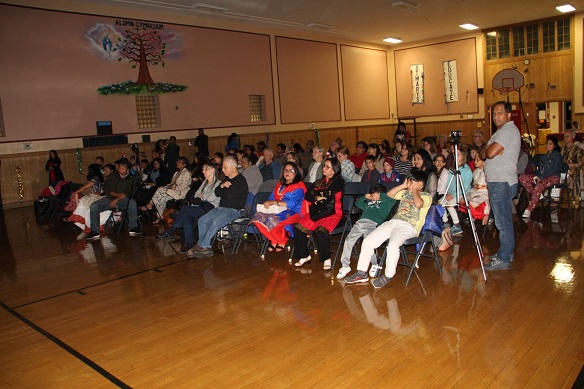Contribute
| Natya Blend - A Welcome Trend In Cultural Confluence |
S. Ramamoorthy
11/01/2018
It was an evening of setting winter at St.Mary’s Church in Winchester, MA. The occasion was the performance of Indian classical music and dance under the fanciful title 'Natya Blend.' Thanks to the generous support of the Winchester Cultural Council, Massachusetts Cultural Council and St.Mary's Parish, the coveted program was launched by Sharanya School of Odissi under its able Director, Srabonti Bandopadhyay.
The program featured a noble theme, “Peace and Justiceâ€, apt for this day and age, bridging cultures and broadening art appreciation for Winchester audience. The main motivation was to highlight the fact the classical art forms of India carry a rich tradition emanating from divine origin aiming at the spiritual uplift of the artist and the audience as well. In the present concert three of the time old dance forms – Bharathanatyam (Tamilnadu), Odissi (Odissa), and Saatirya (pronounced Hatriya from Assam), were in rendition along with Hindustani classical music through a saxophone recital.
The Emcee of the evening, Smt. Udita Ganguly kept the ball rolling quite diligently. The evening’s program started with felicitation of the main artists – Jeyanthi Ghatraju (Bharatanatyam), Phil Scarff (Saophone), Dristi Neog (Saatriya), Srabonti Bandopadhyay (Odissi) and Hari Shanmugam (mridangam) by young students of Sharanya school of Odissi, paying their respect and appreciation for their art, as these artists are professionals in other fields and Hari, a sophomore at Boston College.
The curtain raiser was an invocatory dance by the young students of Sharanya School of Odissi under the tutelege of Srabonti Bandyopadhyay. The young artists paid oblations to the Almighty and the Guru to seek their blessings and embarked on their rendition. The title song 'Momo chitte' is a composition by the Noble laureate poet Rabindranath Tagore and it was widely applauded by the audience.
The next in number was a Dash Avathar of the caring God Mahavishnu.in Sattriye style by Dristi Neog. Dristi portrayed the ten incarnations of Lord Vishnu as described in the poem composed by the 15th century poet, Sri Shankaradeva. The dance acumen of the artist was greatly evidenced by her fine expression of poetic contents describing incidents in each incarnation through fine hand gestures, facial expressions and pure dance sequences. The essence of the incarnations -'Satyameva Jaya te' (victory of good/truth over evil) was brought out excellently in the rendition. And the audience enjoyed every moment of the presentation. The additional attraction was the special costume worn by the artist, bearing the Assamese tradition.
Jeyanthi Ghatraju, a Bharatanatyam performer, choreographer and teacher presented her solo next. She presented “Durge Durgeâ€, a keerthanam by the contemporary composer, Madurai Krishnan, apt for the day of Viayadasami, which happened to be that day. Durga, the enchanting form of Goddess in the Hindu cosmology is believed to be the annihilator of all evil, both internal and external, granting peace and bliss. It was a riveting performance and Jeyanthi did a fine job of bringing out the nuances in her choreography and presentation – the picturesque poses and crisp pure dance sequences were a delight to watch.
The third dance number was presented by Srabonti Bandhopadhyay, in Odissi style. She performed the Ardhanareeshwara stotram, by the 8th century composer, by Saint Adi Sankaracharya. Legend says that after eons of meditation by Lord Shiva (male) and Parvathi (female), both merged in one, symbolizing the oneness of the Universe. Ardhanareeshwara venerates Shiva as half female, and the verses beautifully highlight the tandava of Shiva and the lasya of Parvathi. Srabonti did an excellent job of portraying the contrasting qualities with fine poses and crisp rhythm patterns.
Now, the flavor of the recital changed and it was time for Hindustani classical music by the accomplished artist, Phil Scarff. Phil is a rare artist capturing the nuances of Hindustani classical music on soprano saxophone. Phil was ably accompanied by Hari Shanumugam on the mridangam. Hari is a second generation musician, born and brought up in Boston. Phil and Hari took up the challenge of combining two instruments which are not traditionally played together and provided a mellifluous experience to the audience.
The finale was quite the talk of the day, a tarana. The piece was composed from scratch by Phil, set to rhythm patterns for dance by Jeyanthi and Hari and choreographed by the dancers. It was the highlight simply for the fact that an abstract piece of music, improvised on stage by the musicians, could be presented so seamlessly to a theme that is difficult to portray and create an uplifting mood!
In her vote of thanks, Srabonti mentioned how her dream of bringing the enchantment of music and dance from India to Massachusetts beautifully took form and this was just the beginning! It was a commendable effort, diligently planned and worked out by the artists for months, with the generous support of the MA Cultural Council, Winchester Cultural Council and the St. Mary’s Parish as the venue. The Holy church was transformed to a divine abode that evening, thanks to many volunteers and the audience could cherish in the bliss of it all for a long time!
You may also access this article through our web-site http://www.lokvani.com/
